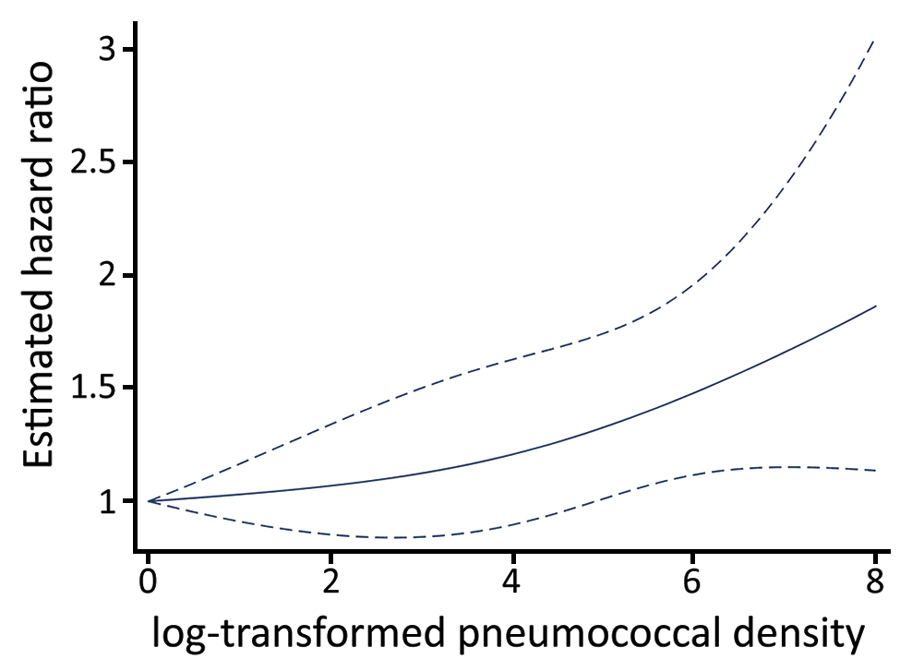Volume 25, Number 11—November 2019
Research
Nasopharyngeal Pneumococcal Density during Asymptomatic Respiratory Virus Infection and Risk for Subsequent Acute Respiratory Illness
Figure 3

Figure 3. Association between asymptomatic pneumococcal densities and risk of subsequent acute respiratory illness among children <3 years of age, Respiratory Infections in Andean Peruvian Children study, May 2009–September 2011. Estimated hazard ratios correspond to comparisons of increasing log10-transformed pneumococcal density relative to the lowest detectable densities (p = 0.013). Solid lines represent the point estimates for the hazard ratio by log-transformed pneumococcal density; dashed lines represent 95% CIs. Estimates were obtained from a frailty model that adjusted for age, sex, month, prior antibiotic exposure, viral detection, and pneumococcal conjugate vaccination status. Pneumococcal densities were modeled by using restricted cubic splines to allow examination of nonlinear associations.